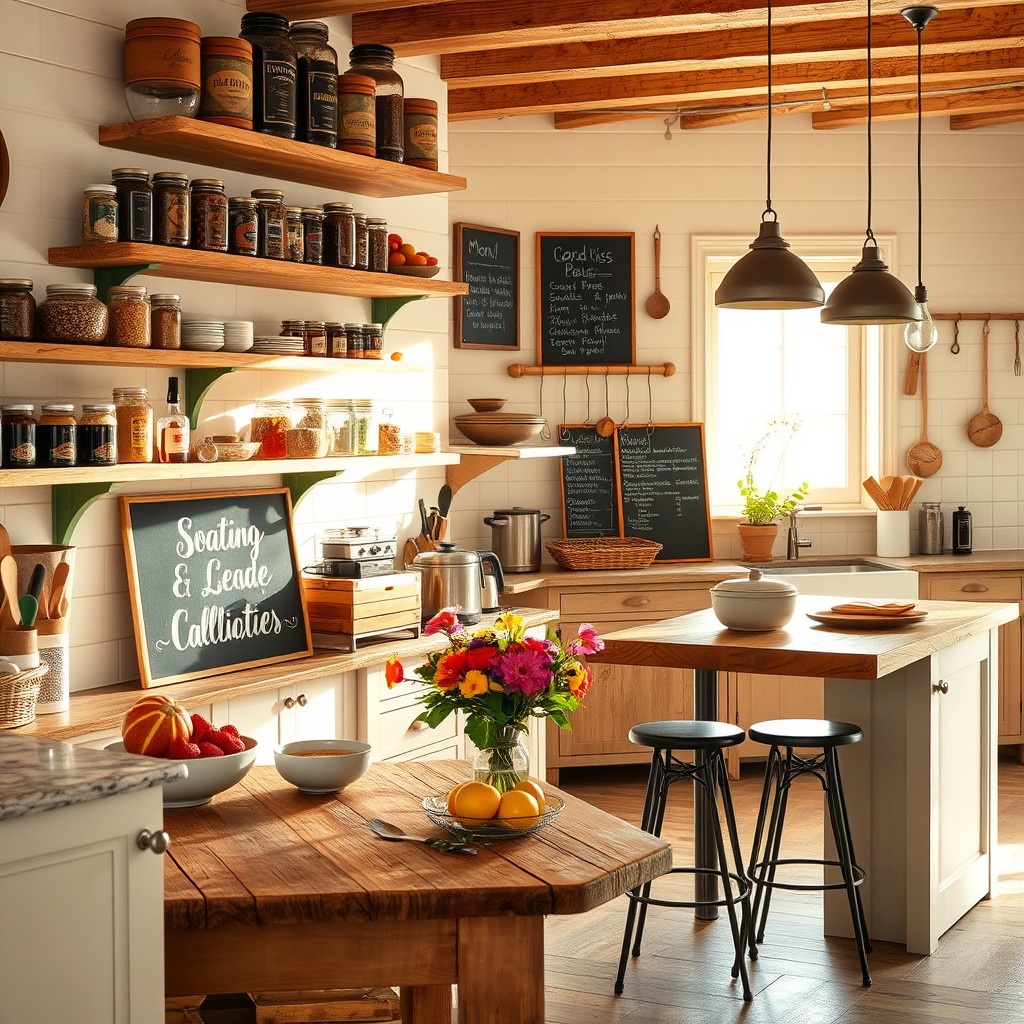
A well-organized kitchen can make meal prep faster, cooking more enjoyable, and clean-up a breeze. By decluttering and creating efficient storage solutions, you can transform your kitchen into a functional and beautiful space. Here are seven easy steps to help you get your kitchen in order.
1. Declutter and Clean Out
Start Fresh
- Why It Works: The first step to organizing any space is decluttering. Remove items you no longer use or need to make space for what’s truly essential.
- How to Do It: Take everything out of your cabinets, drawers, and pantry. Sort through your kitchen gadgets, utensils, and food items, and get rid of anything expired, broken, or that you haven’t used in the past six months.
Tip: Donate any excess items that are in good condition but no longer useful to you, like duplicate kitchen gadgets or old dishware.
2. Group Similar Items Together
Organize by Category
- Why It Works: Grouping similar items together helps you easily find what you need and ensures your kitchen stays tidy.
- How to Do It: Create categories such as baking supplies, spices, canned goods, pots and pans, and cooking utensils. Store like items together in designated areas to avoid clutter and confusion.
Tip: Label shelves or containers for specific categories to help you and your family maintain the organization system.
3. Maximize Cabinet and Drawer Space
Smart Storage Solutions
- Why It Works: Maximizing your cabinet and drawer space allows you to store more items in an organized manner.
- How to Do It: Use shelf risers, pull-out cabinet organizers, or stackable bins to create more space. Drawer dividers can help keep utensils and tools separated and easy to access.
Tip: Use the back of cabinet doors for additional storage by attaching hooks or racks for hanging pot lids, measuring cups, or oven mitts.
4. Utilize Vertical Space
Go Up
- Why It Works: In a small kitchen, using vertical space is key to maximizing storage and keeping counters clear.
- How to Do It: Install floating shelves to store frequently used items like spices, mugs, or cooking oils. Hang pots and pans from a ceiling rack, or mount hooks for utensils, aprons, or towels.
Tip: Use magnetic strips for knife storage or attach small baskets to the walls to hold items like kitchen towels or cutting boards.
5. Create a Functional Pantry
Store with Purpose
- Why It Works: A well-organized pantry saves you time and helps you avoid buying duplicates of items you already have.
- How to Do It: Use clear containers or labeled bins to store dry goods like pasta, rice, and flour. Group similar items together (e.g., snacks, canned goods, spices) and store them on the same shelves. Consider using lazy Susans or tiered racks for easy access to items in deep shelves.
Tip: Keep frequently used items at eye level and store heavier or rarely used items on lower or higher shelves.
6. Designate Zones
Optimize Workflow
- Why It Works: Creating designated zones in your kitchen makes it easier to find what you need and enhances the cooking process.
- How to Do It: Establish zones for different tasks, such as a prep zone near the cutting boards, a cooking zone around the stove, and a cleaning zone by the sink. Store relevant tools and ingredients in each zone for easy access.
Tip: Place everyday items like coffee mugs or dishes near the dishwasher for easy unloading and access.
7. Keep Counters Clutter-Free
Streamline Your Space
- Why It Works: Clear countertops create a visually appealing space and give you more room to cook and prep.
- How to Do It: Only keep the essentials on the counter, such as a coffee maker or a frequently used cutting board. Store smaller appliances, like blenders or toasters, in cabinets when not in use to maintain a tidy workspace.
Tip: Use a tray or basket to group countertop items, like salt, pepper, and olive oil, for a more streamlined look.
Conclusion
An organized kitchen can make a world of difference in your daily routine. By following these seven easy steps—decluttering, grouping similar items, maximizing space, using vertical storage, organizing your pantry, creating functional zones, and keeping counters clear—you’ll transform your kitchen into an efficient and enjoyable space. Stay consistent with your organization system, and you’ll find cooking and cleaning more manageable than ever.
ADVERTISEMENT


